#Custom Flutter App Development Services
Explore tagged Tumblr posts
Text
Custom Flutter App Development Services by Shiv Technolabs
Shiv Technolabs offers expert Flutter app development services to create high-performance, cross-platform mobile applications tailored to your needs. Our skilled developers specialize in building responsive and visually appealing apps with a single codebase, ensuring compatibility across iOS and Android platforms.
By integrating advanced Flutter features such as widget customization, fast loading, and smooth animations, we deliver apps that provide an engaging user experience while reducing development time and cost.
0 notes
Text
#flutter app development#flutter app development services#custom flutter app development services#flutter app development company
0 notes
Text
#trusted flutter app development consulting firm#custom flutter app development services#flutter app development services#flutter app development#flutter
1 note
·
View note
Text
Best Software Company in Hyderabad | Moironix.
Moironix Soft Solution offers mobile app development, web design, digital marketing, and graphic design services. Get custom IT solutions for your business!
At Moironix Soft Solutions, we are passionate about delivering cutting-edge technology solutions that drive business success. Founded with a vision to empower businesses through digital transformation, we specialize in website development, mobile application development, and custom software solutions. Our commitment to quality, innovation, and client satisfaction sets us apart in the competitive landscape of IT services.
Mobile App Development, custom mobile app development Hyderabad, hybrid app development cost, react native app development services, flutter app development for startups
#Mobile App Development#custom mobile app development Hyderabad#hybrid app development cost#react native app development services#flutter app development for startups
0 notes
Text
#Mobile App Development Company near me#Mobile App Development Company#software development company in india#Cloud Consulting Services in Noida#Cloud Consulting Services#app development in noida#software development company in noida#custom software development company in noida#ios app development company in noida#AWS Cloud Services#Best Service cloud consulting providers#Microsoft Azure cloud consulting services#Cloud Consulting Services India#Amazon Cloud Consulting Services#Cloud Software Consulting Services#Devops consulting and managed cloud services#AWS cloud consulting services#Cloud Managed Services#Cloud Strategy & Consulting Service#Cloud Services#Cloud Consulting Services in India#Cloud Consulting Services & Solutions#Best software development company#Best software development company in noida#Custom Flutter App Development Company#mobile app development company near me#app development companies near me#app development company near me#mobile app development company#app development companies
0 notes
Text
Quokka Labs provides top-notch Flutter app development services to craft visually stunning and high-performance cross-platform apps. Unlock faster development cycles and seamless user experiences with our expert team.
#Flutter app development#cross-platform app development#Flutter app development services#Flutter mobile apps#custom Flutter app development#high-performance apps#dynamic app solutions#scalable Flutter apps#Flutter UI/UX design
0 notes
Text
Discover cost-effective strategies for SMBs to adopt AI in 2025. Learn about budgeting, solutions, and tools to streamline operations and maximize ROI.
#AI agent process automation for manufacturing#custom enterprise blockchain development#custom javascript development services#flutter mobile app development#flutter for mobile app development
0 notes
Text
Leverage Quokka Labs' expertise in Flutter app development to create fast, scalable, and stunning cross-platform apps. Empower your business with seamless Android and iOS solutions today!
#Flutter app development#Cross-platform app development#Flutter app solutions#Flutter development company#Custom Flutter apps#Android and iOS apps with Flutter#Scalable Flutter apps#User-friendly app development#Mobile app development with Flutter#Quokka Labs Flutter services
0 notes
Text
Pixcile technologies is a unique innovation organization work in programming improvement, website development, and imaginative IT administrations. Their contributions range from App development and software company improvement to big business arrangements.
#Website design#Website development#App design#App development#Android app development#IOS App Development#Flutter App Development#Custom Software Development#Cloud Services
0 notes
Text
Award-Winning Mobile App Development Company | Mobulous Technologies
Mobulous Technologies is a leading mobile app development company in India, offering cutting-edge mobile solutions for businesses worldwide. From iOS to Android and Flutter, our team of experts specializes in creating custom mobile apps that help businesses grow. Get in touch with Mobulous Technologies for top-quality mobile app development services and bring your idea to life today!
#Mobile app development#iOS app development#Android app solutions#Flutter development#custom mobile apps#app development services
1 note
·
View note
Text

🌐 Experience the future of app development with Flutter! Unlock the potential of cross-platform apps that deliver stunning performance and aesthetics. Ready to impress users on both iOS and Android? Let's Flutter away! 🌐 Learn more: https://greyspacecomputing.com/trusted-flutter-app-development-consulting-firm/
📧 Email: [email protected]
#greyspacecomputing #flutterapp #flutter #CrossPlatform #flutterdeveloper #flutterdev #appdeveloper #androiddeveloper #appdevelopment #flutterdevelopment #android #ios #iosdeveloper #coding #mobileappdevelopment #mobileapp #developer #daysofcode #dart #programming #coder #flutterapps #iosapp #appdev #programmer #androidstudio #appdevelopers #kotlin #androiddev #googleflutter #mobileappdeveloper #iosdev
#trusted flutter app development consulting firm#flutter app development services#custom flutter app development services#flutter
0 notes
Text
How to Build a Ridesharing App like Lyft: Key Features & Development Costs

Lyft and similar services revolutionized travel, boosting accessibility and efficiency. These ride-sharing apps improved transport and user experience. They also changed urban mobility.
The demand for custom application development services surges as digital needs increase. Businesses scramble to meet soaring demand for tailored software solutions. It allows businesses to tap into a thriving market.
Why Build a Ride-Sharing App Now?
In 2023, the ride-sharing industry hit $106.70 billion globally. Projections for 2024 show a climb to $126.46 billion. By 2034, experts foresee a staggering $691.63 billion valuation. This sector’s robust 18.52% yearly growth rate, spanning 2024 to 2034, signals a transformative decade ahead for urban mobility and transportation economics (source)
Urban sprawl, pricey gas, and eco-friendly trends fuel ride-sharing’s rise. Commuters and companies alike embrace this cost-effective, green transport solution. As cities grow and budgets shrink, shared rides beat solo driving.
Ride-sharing apps offer lucrative opportunities for businesses of all sizes. New players can challenge industry giants by targeting niches or local markets. Innovative features set newcomers apart in this essential urban service. As AI and self-driving tech evolve, custom apps unlock growing markets.
Both startups and established firms can profit from this transport revolution. They can carve out a niche in an ever-expanding digital world.
Key Features Required for a Successful Ride-Sharing App
Seamless experiences drive successful ride-sharing apps. Users crave intuitive interfaces for quick bookings, real-time tracking, and secure payments. Drivers need efficient route planning, fair compensation, and easy communication.
Both benefit from robust profiles, rating systems, and responsive customer support. Safety features like emergency contacts and driver verification build trust. Integrating maps, GPS, and push notifications ensures smooth operations.
A well-crafted app balances these elements, creating a user-friendly ecosystem that keeps riders coming back and drivers engaged. Constant refinement based on feedback fuels continuous improvement, keeping the app competitive in a crowded market.
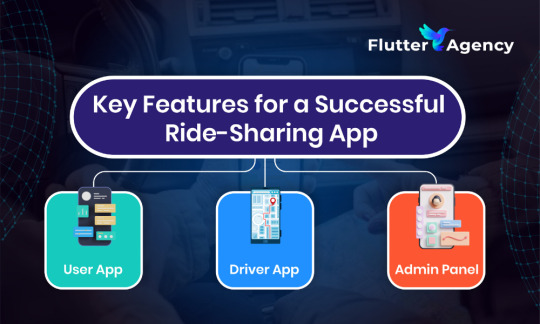
User App:
Simple Registration and Onboarding: Connect effortlessly. Email, phone, or social media��pick your path. Our swift signup process welcomes all users, boosting retention through seamless onboarding. Create your account now and join our community without delay.
Book, estimate, track: Riders crave simplicity. A few taps should secure transport, reveal costs, and display live journey updates on an interactive map. Seamless functionality empowers passengers, transforming travel into a smooth, predictable experience.
Payment Gateway Integration: Streamline purchases with multiple payment options: credit, debit, and e-wallets. Quick, hassle-free transactions await.
Feedback: Riders can rate and review drivers. This ensures high service standards.
Driver App:
Driver Profile Setup and Verification: Drivers must create a profile and verify their identity for safety.
Ride Request Notifications and Navigation Assistance: Drivers get ride requests. They use the app to navigate to destinations quickly.
Earnings Dashboard: Clear financial insights await drivers who monitor their earnings. Daily, weekly, and monthly tracking illuminates income patterns, empowering informed decisions and goal-setting. This comprehensive view of finances fuels motivation and strategic planning for success on the road.
Ratings and Reviews from Riders: Rider feedback ensures that drivers provide high-quality service and performance.
Admin Panel:
User and Driver Management: The admin can monitor both drivers and users. This ensures smooth operations and resolves any issues.
Analytics and Reports: Analytics lets admins check ride frequency, user behavior, and revenue. This improves the app’s performance.
Fraud Detection and Prevention: Automatic processes reveal con activities, maintaining the platform’s reputation.
To develop these features, invest in custom app development. It will ensure your app runs well and scales with demand.
The Importance of Real-Time Features
Real-time features are crucial to a ride-sharing app. They ensure riders and drivers get accurate, up-to-date information. This is key for the app’s functionality and user experience. Let’s explore the key real-time components:
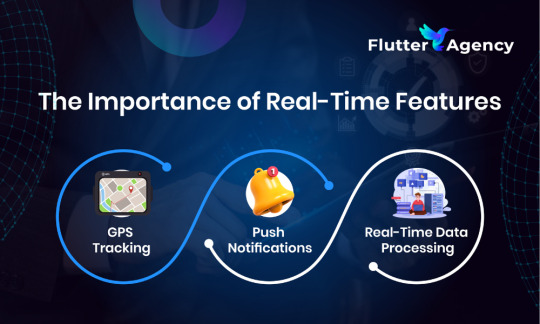
1. GPS Tracking
Lyft’s ride-sharing app hinges on real-time GPS tracking. This vital feature pinpoints vehicle locations instantly, keeping both drivers and passengers informed throughout their journey. The technology turns smartphones into dynamic maps. They show moving cars as they navigate city streets. This helps coordinate pickups, estimate arrival times, and ensure safety. Riders can track their driver’s route and ETA. Drivers can use it for turn-by-turn navigation. This feature boosts transparency and trust between the service and its users. It improves the overall experience.
2. Push Notifications
Push notifications play a critical role in keeping users informed. Riders get updates on requests, arrivals, and payments. Drivers are notified of new requests. They get updates on rider locations and cancellations. This constant communication keeps users informed, without checking the app. It makes the ride process smooth.
3. Real-Time Data Processing
To deliver a seamless booking experience, real-time data processing is essential. Low-latency data transmission ensures quick ride matching, updates, and fare calculations. For example, when a user books a ride, the system quickly checks available drivers, arrival times, and distances. It then provides instant feedback. This fast processing reduces delays. As a result, both drivers and riders enjoy a smooth, efficient experience.
Real-time features like GPS and notifications boost user satisfaction, safety, and efficiency.
Technology Stack for Building a Ride-Sharing App
A robust, scalable tech stack forms the backbone of any successful ride-sharing app. Lyft’s model demands a powerful foundation to handle high user demand, real-time data processing, and seamless transactions. It must handle real-time data, user interactions, and geolocation services. Here’s a breakdown of essential components:
Mobile Development Frameworks:
When choosing a framework for mobile app development, prioritize performance and user experience. Some of the most popular options include:
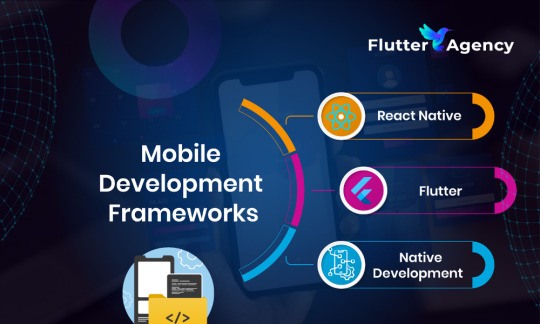
React Native: React Native is a popular framework for cross-platform apps. It lets developers create a shared codebase for iOS and Android. This speeds up development.
Flutter: Flutter is known for its speed and expressive UI. It’s perfect for startups and businesses that need quick app development. You can hire Flutter experts for faster and more efficient application development. Swift delivery meets user satisfaction in this balanced strategy, accelerating launch without compromising excellence.
Native Development (iOS/Android): For peak performance, use Swift (iOS) or Kotlin (Android) for native development. Native apps usually have better access to device hardware and sensors.
Backend Technology:
A reliable backend is the backbone of a ride-sharing app. Matching riders in real time, verifying users, and tracking locations are core functions this system manages seamlessly. It deftly coordinates these vital processes to keep operations running smoothly.
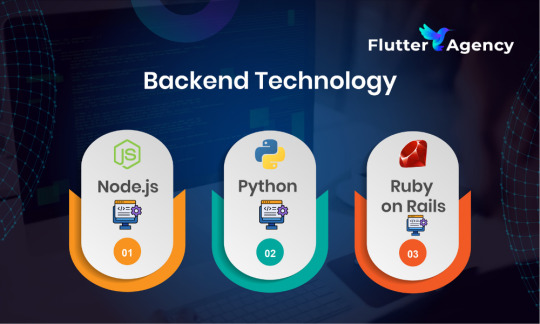
Node.js: Node.js is fast and scalable. It’s popular for real-time apps, making it perfect for a ride-sharing platform.
Python (Django): Python’s Django framework excels in web development. Its sleek design enables fast, scalable projects. Developers prize Django for its practical approach and high-level functionality.
Ruby on Rails: Startups thrive with Ruby on Rails. Its sleek syntax boosts productivity, making it an ideal framework for new ventures.
APIs and Tools:
To enable geolocation, payments, and chat, we must use third-party APIs and tools.
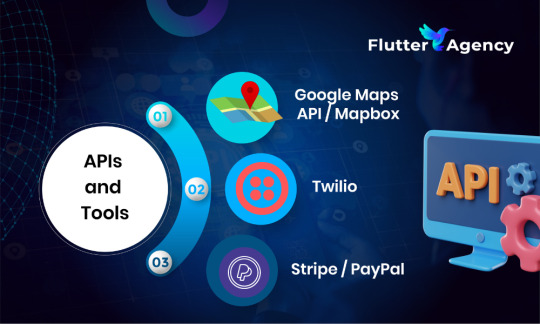
Google Maps API / Mapbox: These services allow users and drivers to track rides. They can estimate arrival times and navigate routes using real-time mapping and geolocation features.
Twilio: Twilio simplifies adding messaging services. It’s for SMS notifications and rider-driver communication.
Stripe / PayPal: For seamless payment processing, use payment gateways like Stripe or PayPal. They ensure secure transactions for users and drivers.
A ride-sharing app’s fate hinges on its tech stack. The right choice fuels growth, handles demand, and delights users. Smart developers weigh options carefully, knowing their decision shapes the app’s future.
A ridesharing app’s price tag in 2024 ranges from $70,000 to $200,000. Complexity, features, and technology choices drive costs up or down within this spectrum. Developers must achieve a balance between functionality and budgets when creating Lyft-like platforms.
Breakdown of Costs:
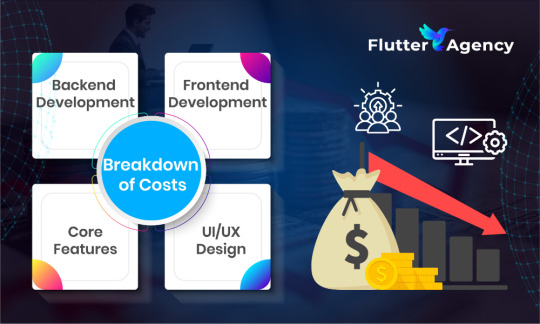
Backend Development: Tech stacks shape backend costs. Node.js, Django, or Ruby on Rails influence pricing for critical services. User authentication and payment gateways range from $3,500 to $20,000, depending on complexity and chosen framework.
Frontend Development: Cross-platform frameworks slash frontend costs. React Native and Flutter offer savings, with prices spanning $6,000 to $36,000. Feature complexity and target platform – iOS or Android – drive the final bill. Savvy developers leverage these tools to create mobile apps that are both efficient and budget-friendly.
Core Features: Features like geolocation and ride-booking will cost about $6,000 each. Adding advanced options like split fares and scheduling rides can increase the cost by $6,000 to $8,000 each.
UI/UX Design: A design that is easy to use on both iOS and Android devices will cost over $12,000.
The cost also depends on extra features. These include real-time tracking, fare splitting, and driver management systems. Remember that maintenance, marketing, and updates will increase the budget.
Also Read: Guide to Create Uber like Clone Taxi Application
Challenges in Developing a Ride-Sharing App
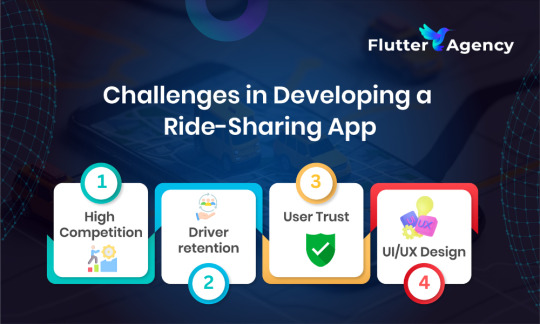
High Competition: The ride-sharing market has giants such as Lyft. These companies have significant brand recognition, financial resources, and advanced features. To stand out, a new app must be unique. It must offer new features or serve a niche market. This will distinguish it from its competition.
Driver retention: Engaged, motivated drivers drive success. Bonuses, flexible hours, and rewards spark retention. Smart incentives keep your team on the road and committed to excellence. However, many new platforms struggle to profit while providing these perks.
User Trust: Building trust with users is essential. This means using strong security, clear pricing, and full insurance. It also means high-quality service, with regular driver checks. Trustworthy experiences attract repeat customers and positive reviews. They are vital for growth in a competitive market.
Future Trends in Ride-Sharing Apps
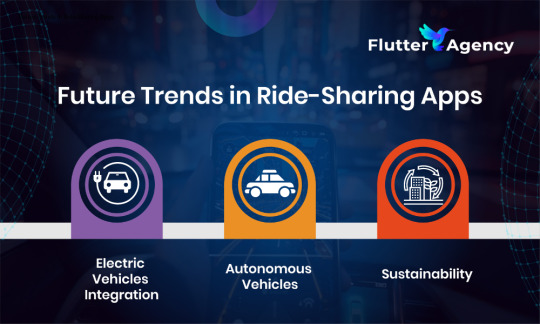
Electric Vehicles (EV) Integration: Electric cars are transforming ride-sharing. Uber and Lyft plan all-electric fleets by 2030, driven by sustainability goals. This green shift slashes emissions, complies with regulations, and appeals to eco-conscious passengers. Riders increasingly favor cleaner transportation options, accelerating the industry’s electric revolution.
Autonomous Vehicles: Self-driving breakthroughs reshape ride-sharing’s future. Tesla and Waymo lead the charge, pushing AI to new heights. Driverless cars slash expenses, boosting efficiency. Safety improves as human error fades. The revolution has begun, though its full impact remains unseen. This nascent technology promises a transformed industry landscape.
Sustainability: Ride-sharing platforms are adopting green initiatives with greater frequency. Other sustainability practices, besides EVs, can help. Carbon offset programs, carpooling, and shared rides can reduce carbon footprints. Such practices attract eco-conscious users. They can also differentiate themselves in a competitive market.
These trends suggest that new technology and a focus on sustainability will shape ride-sharing.
Launch Your Ride-Sharing App!
Start building your own Ride-Sharing App at a low cost.
LET'S DISCUSS
Final Thoughts
A ride-sharing app has great potential. The market is growing due to new tech and shifting consumer needs. There are many ways to create a unique, scalable platform. You can integrate electric vehicles and autonomous driving tech. You can also use real-time GPS tracking and secure payment gateways.
#Build a Ridesharing App like Lyft#Lyft Clone App Build#Custom App Development Services#Ride-sharing app development cost#Cost to build a Lyft clone#Lyft app development expenses#Lyft alternative app development cost#Ride-sharing app development pricing in USA#Custom ride-sharing app development#flutter app development
0 notes
Text
Why Flutter is Revolutionizing Cross-Platform Mobile App Development
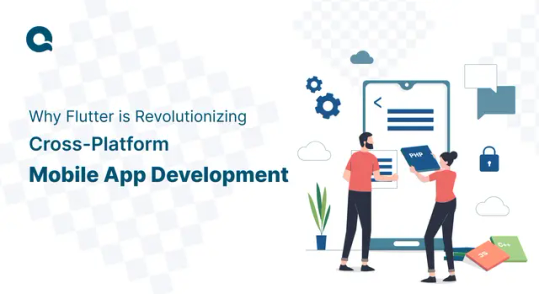
In recent years, cross-platform mobile app development has gained significant traction. Businesses want apps that run smoothly on Android and iOS without developing separate codebases for each. This is where Flutter, Google’s open-source UI framework, comes into play. Since its launch, Flutter has been reshaping the mobile app development landscape by making it easier, faster, and more efficient to build cross-platform apps.
In this blog, we’ll explore why Flutter is becoming the go-to choice for developers and businesses alike, how it’s revolutionizing mobile app development, and what benefits it brings to the table.
1. What is Flutter?
Flutter is an open-source UI software development kit (SDK) created by Google. It enables developers to build natively compiled applications for mobile (Android & iOS), desktop, and web from a single codebase. Unlike traditional frameworks, where different code is written for different platforms, Flutter allows a write-once, run-anywhere approach.
Key Features of Flutter:
Single Codebase: Develop once, and the app can be deployed across multiple platforms.
Hot Reload: Instantly see changes in the code without restarting the app.
Pre-built Widgets: A rich set of customizable widgets that provide pixel-perfect app designs.
Strong Community Support: Backed by Google and a large developer community.
2. Why Choose Flutter for Cross-Platform App Development?
The reasons why Flutter stands out among other cross-platform frameworks like React Native or Xamarin are its speed, flexibility, and modern architecture. Let’s look at the key reasons why developers and companies are increasingly choosing Flutter:
A. Single Codebase for Multiple Platforms
One of the biggest advantages of Flutter is that developers can write one codebase and deploy it across Android, iOS, web, and desktop. This significantly reduces development time and cost for businesses.
Example: A startup developing a social media app doesn’t need to hire separate teams for Android and iOS development. With Flutter, one team can develop and maintain both versions, speeding up time-to-market and reducing expenses. For instance, the company Reflectly, which is an AI-driven journal app, successfully launched its app on both platforms using a single codebase, allowing it to focus on features rather than platform-specific adjustments.
B. High-Performance Apps
Flutter apps are known for their high performance because they are natively compiled. The framework uses the Dart programming language, which compiles native ARM machine code, ensuring fast execution and quick app load times.
Core Example: Google Ads, the official app for managing Google Ads campaigns, was built using Flutter. This app showcases how Flutter can handle real-time data and provide high performance with a smooth user experience.
C. Hot Reload Feature
The Hot Reload feature of Flutter allows developers to see changes made in the code instantly. This boosts productivity by allowing quick iterations, debugging, and testing, thus minimizing delays in the development process.
Example: Developers working on the BMW app used Hot Reload to experiment with UI changes without losing their app state. This feature helped them refine their design in real time, resulting in a polished final product.
3. How Flutter Compares to Other Frameworks
A. Flutter vs. React Native
React Native is another popular cross-platform framework, but Flutter has an edge due to its richer set of pre-built widgets and its Skia graphics engine, which allows for faster rendering and smoother animations.FeatureFlutterReact NativeProgramming LanguageDartJavaScriptRenderingSkia EngineNative ComponentsHot ReloadYesYesPerformanceHighMedium
B. Flutter vs. Native Development
Native development for Android (using Java or Kotlin) and iOS (using Swift or Objective-C) results in platform-specific apps. While this allows for full access to platform-specific APIs and hardware features, it increases the development time and cost. Flutter strikes the balance by providing near-native performance with a single codebase.
Example: Alibaba used Flutter to develop parts of their app because it provided better performance while maintaining consistency across platforms. This allowed them to quickly iterate on features while ensuring a unified user experience.
4. Key Benefits of Using Flutter
A. Customizable Widgets
Flutter provides a large library of widgets that are highly customizable. These widgets help developers create pixel-perfect designs that look native on both Android and iOS. The flexibility of these widgets allows for faster UI creation and reduces the dependency on platform-specific designs.
B. Faster Development Cycles
Thanks to the single codebase and the Hot Reload feature, developers can iterate quickly, speeding up development cycles. This allows for faster time-to-market, which is a significant advantage for businesses looking to launch apps rapidly.
Core Example: eBay Motors utilized Flutter to develop its app, allowing for quicker iterations and faster release cycles. Their ability to quickly adjust features based on user feedback led to increased user satisfaction and engagement.
C. Cost-Effective Development
Building a separate app for iOS and Android can be expensive. Flutter significantly reduces the overall cost as developers only need to write and maintain one codebase. This is especially helpful for startups and businesses with limited budgets.
D. Strong Community and Support
Flutter has gained massive support from the developer community and Google itself. There are numerous tutorials, forums, plugins, and packages available, ensuring developers have access to all the resources they need.
5. Popular Apps Built with Flutter
Several high-profile companies have embraced Flutter for their app development. Here are a few examples:
Google Ads: The official app for managing Google Ads campaigns was built with Flutter, demonstrating its capability to handle complex functionalities and real-time data.
Alibaba: Parts of their mobile app were built using Flutter, showcasing its scalability and performance in high-traffic environments.
BMW: BMW’s app is powered by Flutter, offering a seamless cross-platform experience and demonstrating the framework’s capabilities in a high-end automotive environment.
6. Is Flutter the Future of Cross-Platform Development?
Flutter has made significant strides in the mobile app development world. Its ability to create high-performance, visually appealing apps from a single codebase has made it a favorite among developers.
Looking at its current trajectory, it’s clear that Flutter is set to dominate the cross-platform space. As more businesses seek to reduce development costs while delivering high-quality apps, Flutter’s role in revolutionizing mobile app development will only grow.
Conclusion
Flutter is indeed revolutionizing the way developers approach cross-platform mobile app development. By offering a single codebase, faster development cycles, cost-effective solutions, and high performance, Flutter is the ideal choice for businesses that need scalable and efficient mobile applications.
Looking to develop your next app using Flutter? Visit QalbIT Infotech PVT LTD for expert assistance in Flutter development!
#web development#ui ux design#web design#e commerce#digita marketing#businessgrowth#laravel#phpdevelopment#seo services#software development#flutter dandys world#fluttercord#flutter app development#mobile app company#mobile#app development#application#customer#software#github#mobile app development
0 notes
Text

mobile application service provider
#mobile application service provider#mobile application development services#native app development services#hybrid app development services#android app development#ios mobile app development#cross platform mobile development#mobile game development company#custom mobile apps#blockchain mobile app development#app development#mobile app development#app development company#mobile app development company#app development software#flutter app development#android development#ios app development#best app developers#create android app#web app development#mobile app development software#mobile development#android app development software#android application development#cross platform app development#best app development companies#best app development software#app development agency#make android app
0 notes
Text
#Mobile app development services#Website and Mobile App Development Company#Android and iOS App Development company#mobile app development company#iOS app development services#Android app development services#App Development Company#Mobile App Development Company in Noida#Android App Development Company#Android App Development Company in Noida#iOS App Development Company in Noida#iOS App Development Company India#Mobile Application Development company#top ios app development company#ios application development services#ios development services#ios app developers near me#ios mobile app development services#Flutter App Development Company#Flutter App Development Services#React native app development Services#React native app development company#React native app development Services in Noida#Custom Software Development Services#Custom E-Commerce App Development#eCommerce App Development Company#eCommerce app development services#eCommerce Application Development Company#eCommerce Application Development#Invoicing Software development company in Noida
0 notes
Text
#website development#ai solutions#custom software development#mobile application development#ui ux design#reactjs#javascript#figma#html css#generative ai#gen ai#ai writing#llm#ai technology#artificial intelligence#seo services#web development#flutter app development#hiring#ruby on rails development company#internship#freshers#career#job
0 notes